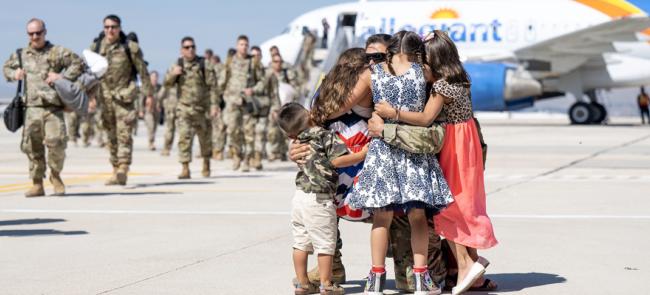
The National Guard saw a strong recruiting year in fiscal 2024, according to the National Guard Bureau.
The Army Guard surpassed its goal, signing up 35,013 recruits for the year. The service’s mission was 34,140.
The Air Guard also had a good year recruiting 8,845 new soldiers. Their target for the year was 8,495 recruits.
According to NGB, the Army Guard retained 97.4% of its force, while the Air Guard retained 90.54% of its airmen.
The reported numbers coincide with the Defense Department announcing last week that the U.S. military recruited 225,000 people in fiscal 2024, 12.5% more than in fiscal 2023.
Director of Military Accession Policy Katie Helland said the services will continue to build off the momentum from fiscal 2024.
"We need to remain cautiously optimistic about the future recruiting operations as we continue to recruit in a market that has low youth propensity to serve, limited familiarity with military opportunities, a competitive labor market and a declining eligibility among young adults," Helland said during a multiservice panel at the Pentagon last week.
Col. Timothy Smith, the chief of the strength maintenance division for the Army Guard, said a few of the contributing factors to the Army Guard’s recruiting year were the Army’s Future Soldier Preparatory Course and the Prior Service Army Integration Course.
The FSPC gives Army recruits who do not meet the service’s academic or fitness criteria a chance to reach the standards and ship to basic combat training.
The PS-AIC allows prior service applicants to attend a five-week basic training rather than a standard 10-week boot camp.
For the Air Guard, Lt. Col. Gregory Martin, the deputy division chief for Air Guard recruiting and retention, attributed his component’s recruiting success to increased emphasis on engagement at a local level and streamlining the medical waiver process for accessions.
Lt. Gen. Duke A. Pirak, the acting director of the Air Guard, spoke about the component taking a more "regional approach" to recruiting during the 146th NGAUS General Conference & Exhibition in Detroit in August.
He said he has found that one of the best recruiting tools is the Air Guard's unit-level commanders.
"They are a part of it," he noted. "They’re out in the streets and out in the local high schools and churches [helping recruit]."
Martin said the Air Guard's challenges for the fiscal year include finding recruits with the propensity to serve in the military.
"The ANG will utilize [DoD] population surveys to effectively point recruiters towards populations that demonstrate characteristics for military service," he said.
Martin added that the service will also address competition with the civilian sector in fiscal 2025 by trying to improve benefits — including money towards education — and personal and professional growth opportunities.
Smith said the most unique challenge the Army Guard faces during the fiscal year is the necessity to recruit in all the communities that Army Guard units are located in across the 54 states, territories and the District of Columbia.
"Each location possesses demographic, cultural and economic variables, which can affect recruitment strategies and outcomes," he said.
"Recruiting in geographically dispersed areas can be more difficult and more costly than in urban areas," Smith continued.
Smith said that the Army Guard will continue to execute successful recruiting initiatives from fiscal 2024, including maximizing the use of the FSPC, for fiscal 2025.
— By Donald Lambert












